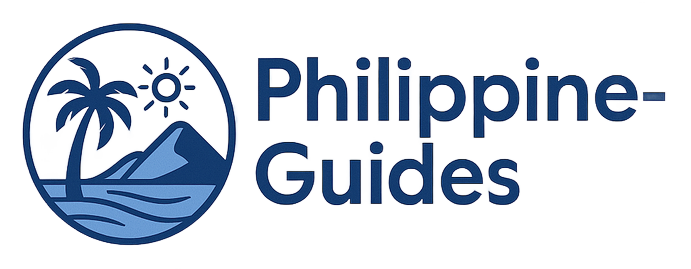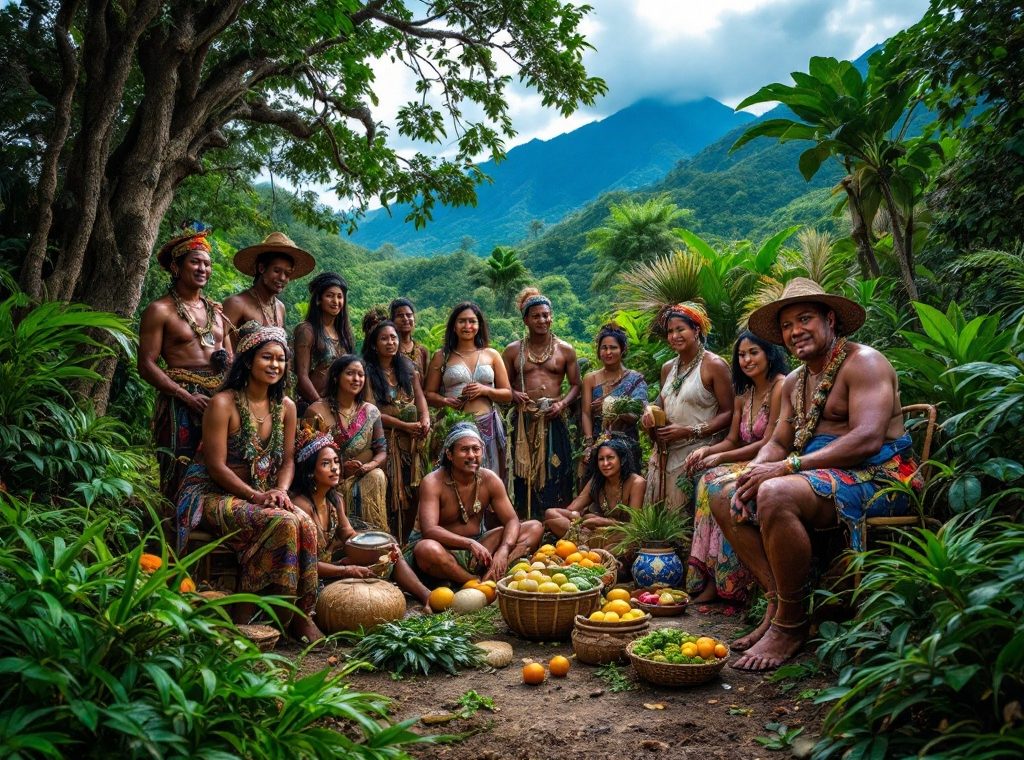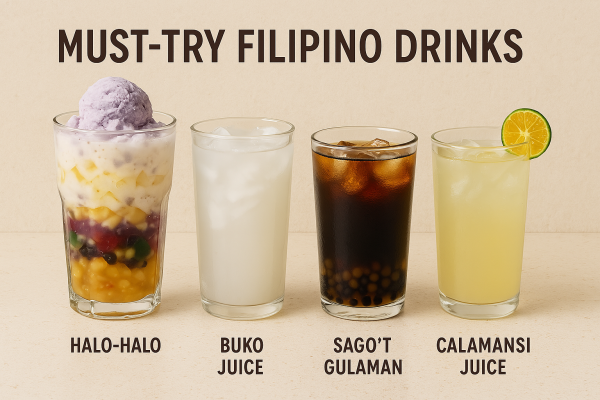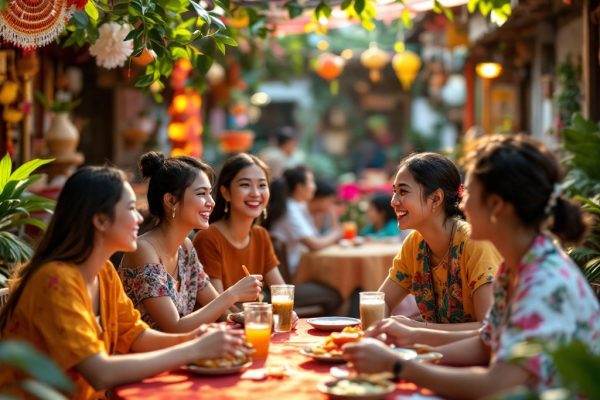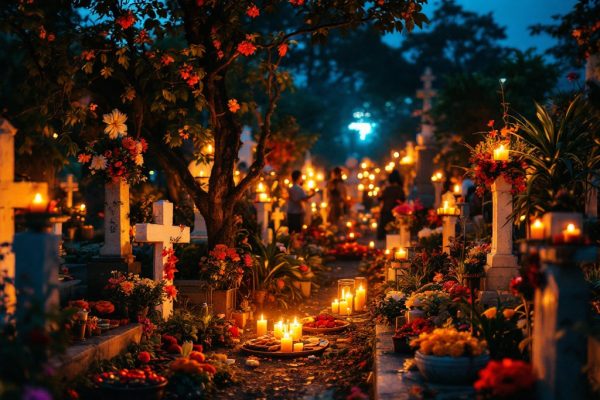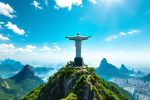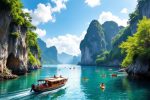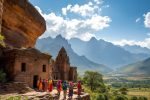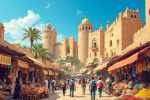Interesting Facts about Indigenous People in the Philippines
Journey back 30,000 years to discover the rich tapestry of Indigenous Peoples in the Philippines. Comprising 14-17% of the population and encompassing 110 distinct ethnolinguistic groups, from the Negritos, the earliest inhabitants, to the Igorot and Lumad, their vibrant cultures are deeply intertwined with their ancestral lands. Explore their unique traditions, languages, and the challenges they face, including development aggression and human rights violations. Delve into the 1997 Indigenous Peoples’ Rights Act (IPRA) and its impact on protecting their heritage. Discover the fascinating world of Indigenous Filipino culture and join the movement to safeguard their future.
Important information

- Indigenous Peoples make up 14-17% of the Philippine population, representing 110 distinct ethno-linguistic groups with unique languages and traditions.
- The Negritos are among the earliest inhabitants of the Philippines, arriving approximately 30,000 years ago.
- The 1997 Indigenous Peoples’ Rights Act (IPRA) recognizes Indigenous Peoples’ rights to their ancestral domains and self-governance.
- Indigenous communities face challenges such as development aggression, land grabbing, and human rights violations, leading to displacement and cultural loss.
- Ancestral domains hold 85% of the Philippines’ key biodiversity areas, and Indigenous communities play a vital role in environmental protection through sustainable resource management.
Historical Context and Origins of Indigenous Peoples
The Indigenous Peoples of the Philippines comprise 14-17% of the population and encompass 110 distinct ethnolinguistic groups. They possess a vibrant history and culture. This diversity reflects their long-standing presence in the region, resulting in unique cultural developments across the islands. Their traditions, languages, and practices are deeply connected to their ancestral lands, and their history has profoundly shaped their identities. They contribute significantly to the nation’s rich cultural tapestry.
The Negritos
Among the earliest inhabitants were the Negritos, known for their small stature, dark skin, and kinky hair. Genetic studies suggest their arrival around 30,000 years ago, preceding other groups. While their hunter-gatherer lifestyle has largely faded, some communities still maintain their unique cultural practices and distinct languages and traditions.
- Aeta,
- Agta,
- Ati,
- Batak.
Genetic studies
Genetic studies suggest their arrival around 30,000 years ago, preceding other groups.
The Negritos: Early Inhabitants
The Negritos, known for their short stature, kinky hair, and dark skin, were among the Philippines’ earliest inhabitants. They arrived approximately 30,000 years ago. This distinguishes them as one of the archipelago’s oldest groups, giving them a unique place in the nation’s history.
The Cultural Diversity of Indigenous Peoples in the Philippines
The Philippines is home to over 100 distinct Indigenous groups, including the Igorot, Lumad, Aeta, Mangyan, and Tausug. These communities, representing 10% to 20% of the population (based on the 2020 census), enrich the nation’s cultural tapestry with their unique traditions and languages. They actively preserve their heritage through oral traditions, rituals, and the passing down of knowledge through generations. Many groups organize workshops, storytelling events, and festivals to revitalize their cultures and promote wider appreciation and awareness of their Indigenous heritage.
Understanding Ethno-linguistic Groups
The Philippines boasts a vibrant cultural mosaic of 110 distinct indigenous ethno-linguistic groups. These communities, each with their own shared language, customs, and traditions, form a vital thread in the nation’s rich tapestry. Preserving these unique cultural elements is crucial for safeguarding the country’s heritage and ensuring future generations can appreciate its diversity.
Demographic Significance in the Philippines
Indigenous Peoples comprise a substantial portion of the Philippine population, representing 10% to 20%, based on the 2020 census. This significant number highlights the importance of culturally sensitive policies that respect their traditions and the heritage that enriches the nation. Protecting their ancestral lands is also essential for preserving their cultural identity.
Traditional Culture and Practices
Indigenous Filipinos maintain a deep connection with their ancestors and the natural world, reflected in their unique traditions. The Ifugao’s carved rice terraces and the Badjao’s exceptional fishing skills are prime examples of this profound connection. These practices are essential to their cultural identity.
Spiritual Rituals
Spiritual rituals hold equal importance. The Kalinga’s “Bodong” peace pact and the Lumad’s “Kahimunan” ritual are vital for preserving their heritage against modern influences.
Traditional Crafts
Beyond agriculture and rituals, traditional crafts thrive. Indigenous Filipinos excel as weavers, potters, and woodcarvers, integrating distinct designs and motifs into their creations. These crafts are not merely decorative; they are potent expressions of identity, strengthening community bonds and passing knowledge to younger generations.
Preserving these traditions is crucial for the future of indigenous Filipino culture.
Preservation of Social Institutions
Indigenous communities carefully protect their social institutions, which are essential for preserving their cultural heritage. These institutions transmit traditions, practices, and customs, thereby strengthening communities and ensuring cultural survival. Kinship systems, councils of elders, and customary laws are key examples. They guide social interactions, resolve conflicts, and maintain order. Remarkably, these structures also enable adaptation, helping Indigenous Peoples navigate change while retaining their unique identity.
Ancestral Domains and Cultural Rights
Indigenous Peoples’ ancestral domains encompass a remarkable 85% of the Philippines’ key biodiversity areas, crucial for their cultural survival and identity. The 1997 Indigenous Peoples’ Rights Act (IPRA) protects these vital domains, recognizing their rights to ancestral lands and self-governance, a cornerstone of cultural preservation. Managing these lands according to customary laws and traditions, Indigenous communities practice sustainable resource management and biodiversity conservation, significantly contributing to the Philippines’ environmental protection.
The Indigenous Peoples’ Rights Act of 1997
The 1997 Indigenous Peoples’ Rights Act (IPRA) recognizes Indigenous Peoples’ ancestral domain rights, granting them a voice in land management. This law reinforces their profound connection to these territories and promotes their right to self-governance.
Management of Ancestral Domains
The 1997 Indigenous Peoples’ Rights Act (IPRA) is a landmark law recognizing ancestral domains and granting indigenous peoples the right to manage them. This management approach uniquely incorporates traditional knowledge for sustainable resource use and biodiversity conservation, aligning with the 2018 Expanded National Integrated Protected Areas System Act. Ancestral domains—lands traditionally occupied by indigenous communities—are vital for their cultural identity and livelihood.
Community Governance and Knowledge Systems
Indigenous communities govern themselves through diverse systems grounded in ancestral wisdom and customary laws. These systems prioritize collective decision-making, shared responsibility, and deep respect for elders. This traditional knowledge informs practical applications, from resource management and conflict resolution to maintaining social harmony. Such an approach empowers Indigenous Peoples to shape their own futures, safeguard their cultural identity, promote environmental sustainability, and ensure the well-being of future generations.
Governance According to Indigenous Knowledge
Indigenous communities often govern themselves according to time-honored customs passed down through generations. These systems prioritize consensus and collective decision-making, with deep respect for elders and ancestral wisdom. This traditional knowledge shapes everything from resource management and conflict resolution to the very fabric of their social structures. For instance, the Igorot people’s Dap-ay system and the Bodong, practiced by various Cordillera groups, showcase the rich diversity and complexity of indigenous governance.
Challenges Facing Indigenous Peoples
Indigenous Filipinos face numerous hardships, often driven from their ancestral lands by development projects and land grabs. Mining, logging, and agricultural expansion fuel this displacement, leading to human rights violations. These violations include discrimination, marginalization, and limited access to healthcare and education. Furthermore, climate change adds another layer of complexity, disrupting traditional livelihoods like farming and fishing due to shifting weather patterns. Advocates are diligently working to establish stronger legal frameworks to protect ancestral domains and cultural heritage.
Development Aggression and Land Grabbing
Development aggression devastates indigenous communities, disrupting their lives and plundering their heritage. Land grabs steal ancestral lands, often rich in resources, making them prime targets for exploitation. This aggressive development disrupts indigenous communities by:
- Stealing ancestral lands rich in resources, making them prime targets for exploitation.
- Disrupting their traditional way of life and livelihoods.
- Damaging the environment and ecosystems they depend on.
These actions have devastating consequences for indigenous communities, leading to displacement, poverty, and the loss of cultural heritage.
Human Rights Concerns
Indigenous communities in the Philippines are facing increasing human rights violations, including land seizures, forced displacement, and threats to their cultural heritage. The unstable political climate further exacerbates these serious issues, requiring immediate action.
